Weiwei Wu
Constraint Matters: Multi-Modal Representation for Reducing Mixed-Integer Linear programming
Aug 26, 2025Abstract:Model reduction, which aims to learn a simpler model of the original mixed integer linear programming (MILP), can solve large-scale MILP problems much faster. Most existing model reduction methods are based on variable reduction, which predicts a solution value for a subset of variables. From a dual perspective, constraint reduction that transforms a subset of inequality constraints into equalities can also reduce the complexity of MILP, but has been largely ignored. Therefore, this paper proposes a novel constraint-based model reduction approach for the MILP. Constraint-based MILP reduction has two challenges: 1) which inequality constraints are critical such that reducing them can accelerate MILP solving while preserving feasibility, and 2) how to predict these critical constraints efficiently. To identify critical constraints, we first label these tight-constraints at the optimal solution as potential critical constraints and design a heuristic rule to select a subset of critical tight-constraints. To learn the critical tight-constraints, we propose a multi-modal representation technique that leverages information from both instance-level and abstract-level MILP formulations. The experimental results show that, compared to the state-of-the-art methods, our method improves the quality of the solution by over 50\% and reduces the computation time by 17.47\%.
CALM: Co-evolution of Algorithms and Language Model for Automatic Heuristic Design
May 18, 2025Abstract:Tackling complex optimization problems often relies on expert-designed heuristics, typically crafted through extensive trial and error. Recent advances demonstrate that large language models (LLMs), when integrated into well-designed evolutionary search frameworks, can autonomously discover high-performing heuristics at a fraction of the traditional cost. However, existing approaches predominantly rely on verbal guidance, i.e., manipulating the prompt generation process, to steer the evolution of heuristics, without adapting the underlying LLM. We propose a hybrid framework that combines verbal and numerical guidance, the latter achieved by fine-tuning the LLM via reinforcement learning based on the quality of generated heuristics. This joint optimization allows the LLM to co-evolve with the search process. Our method outperforms state-of-the-art (SOTA) baselines across various optimization tasks, running locally on a single 24GB GPU using a 7B model with INT4 quantization. It surpasses methods that rely solely on verbal guidance, even when those use significantly more powerful API-based models.
CARE: Compatibility-Aware Incentive Mechanisms for Federated Learning with Budgeted Requesters
Apr 22, 2025Abstract:Federated learning (FL) is a promising approach that allows requesters (\eg, servers) to obtain local training models from workers (e.g., clients). Since workers are typically unwilling to provide training services/models freely and voluntarily, many incentive mechanisms in FL are designed to incentivize participation by offering monetary rewards from requesters. However, existing studies neglect two crucial aspects of real-world FL scenarios. First, workers can possess inherent incompatibility characteristics (e.g., communication channels and data sources), which can lead to degradation of FL efficiency (e.g., low communication efficiency and poor model generalization). Second, the requesters are budgeted, which limits the amount of workers they can hire for their tasks. In this paper, we investigate the scenario in FL where multiple budgeted requesters seek training services from incompatible workers with private training costs. We consider two settings: the cooperative budget setting where requesters cooperate to pool their budgets to improve their overall utility and the non-cooperative budget setting where each requester optimizes their utility within their own budgets. To address efficiency degradation caused by worker incompatibility, we develop novel compatibility-aware incentive mechanisms, CARE-CO and CARE-NO, for both settings to elicit true private costs and determine workers to hire for requesters and their rewards while satisfying requester budget constraints. Our mechanisms guarantee individual rationality, truthfulness, budget feasibility, and approximation performance. We conduct extensive experiments using real-world datasets to show that the proposed mechanisms significantly outperform existing baselines.
CorrDiff: Adaptive Delay-aware Detector with Temporal Cue Inputs for Real-time Object Detection
Jan 09, 2025



Abstract:Real-time object detection takes an essential part in the decision-making process of numerous real-world applications, including collision avoidance and path planning in autonomous driving systems. This paper presents a novel real-time streaming perception method named CorrDiff, designed to tackle the challenge of delays in real-time detection systems. The main contribution of CorrDiff lies in its adaptive delay-aware detector, which is able to utilize runtime-estimated temporal cues to predict objects' locations for multiple future frames, and selectively produce predictions that matches real-world time, effectively compensating for any communication and computational delays. The proposed model outperforms current state-of-the-art methods by leveraging motion estimation and feature enhancement, both for 1) single-frame detection for the current frame or the next frame, in terms of the metric mAP, and 2) the prediction for (multiple) future frame(s), in terms of the metric sAP (The sAP metric is to evaluate object detection algorithms in streaming scenarios, factoring in both latency and accuracy). It demonstrates robust performance across a range of devices, from powerful Tesla V100 to modest RTX 2080Ti, achieving the highest level of perceptual accuracy on all platforms. Unlike most state-of-the-art methods that struggle to complete computation within a single frame on less powerful devices, CorrDiff meets the stringent real-time processing requirements on all kinds of devices. The experimental results emphasize the system's adaptability and its potential to significantly improve the safety and reliability for many real-world systems, such as autonomous driving. Our code is completely open-sourced and is available at https://anonymous.4open.science/r/CorrDiff.
Fast and Interpretable Mixed-Integer Linear Program Solving by Learning Model Reduction
Dec 31, 2024



Abstract:By exploiting the correlation between the structure and the solution of Mixed-Integer Linear Programming (MILP), Machine Learning (ML) has become a promising method for solving large-scale MILP problems. Existing ML-based MILP solvers mainly focus on end-to-end solution learning, which suffers from the scalability issue due to the high dimensionality of the solution space. Instead of directly learning the optimal solution, this paper aims to learn a reduced and equivalent model of the original MILP as an intermediate step. The reduced model often corresponds to interpretable operations and is much simpler, enabling us to solve large-scale MILP problems much faster than existing commercial solvers. However, current approaches rely only on the optimal reduced model, overlooking the significant preference information of all reduced models. To address this issue, this paper proposes a preference-based model reduction learning method, which considers the relative performance (i.e., objective cost and constraint feasibility) of all reduced models on each MILP instance as preferences. We also introduce an attention mechanism to capture and represent preference information, which helps improve the performance of model reduction learning tasks. Moreover, we propose a SetCover based pruning method to control the number of reduced models (i.e., labels), thereby simplifying the learning process. Evaluation on real-world MILP problems shows that 1) compared to the state-of-the-art model reduction ML methods, our method obtains nearly 20% improvement on solution accuracy, and 2) compared to the commercial solver Gurobi, two to four orders of magnitude speedups are achieved.
Transtreaming: Adaptive Delay-aware Transformer for Real-time Streaming Perception
Sep 10, 2024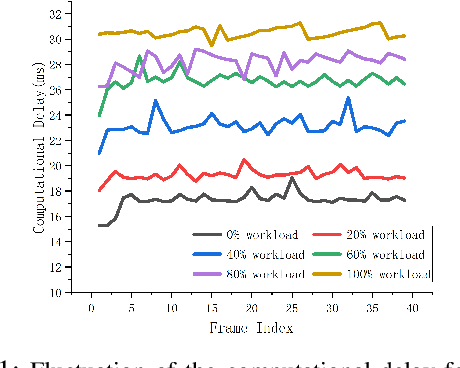



Abstract:Real-time object detection is critical for the decision-making process for many real-world applications, such as collision avoidance and path planning in autonomous driving. This work presents an innovative real-time streaming perception method, Transtreaming, which addresses the challenge of real-time object detection with dynamic computational delay. The core innovation of Transtreaming lies in its adaptive delay-aware transformer, which can concurrently predict multiple future frames and select the output that best matches the real-world present time, compensating for any system-induced computation delays. The proposed model outperforms the existing state-of-the-art methods, even in single-frame detection scenarios, by leveraging a transformer-based methodology. It demonstrates robust performance across a range of devices, from powerful V100 to modest 2080Ti, achieving the highest level of perceptual accuracy on all platforms. Unlike most state-of-the-art methods that struggle to complete computation within a single frame on less powerful devices, Transtreaming meets the stringent real-time processing requirements on all kinds of devices. The experimental results emphasize the system's adaptability and its potential to significantly improve the safety and reliability for many real-world systems, such as autonomous driving.
i-Rebalance: Personalized Vehicle Repositioning for Supply Demand Balance
Jan 09, 2024



Abstract:Ride-hailing platforms have been facing the challenge of balancing demand and supply. Existing vehicle reposition techniques often treat drivers as homogeneous agents and relocate them deterministically, assuming compliance with the reposition. In this paper, we consider a more realistic and driver-centric scenario where drivers have unique cruising preferences and can decide whether to take the recommendation or not on their own. We propose i-Rebalance, a personalized vehicle reposition technique with deep reinforcement learning (DRL). i-Rebalance estimates drivers' decisions on accepting reposition recommendations through an on-field user study involving 99 real drivers. To optimize supply-demand balance and enhance preference satisfaction simultaneously, i-Rebalance has a sequential reposition strategy with dual DRL agents: Grid Agent to determine the reposition order of idle vehicles, and Vehicle Agent to provide personalized recommendations to each vehicle in the pre-defined order. This sequential learning strategy facilitates more effective policy training within a smaller action space compared to traditional joint-action methods. Evaluation of real-world trajectory data shows that i-Rebalance improves driver acceptance rate by 38.07% and total driver income by 9.97%.
UAV Path Planning for Object Observation with Quality Constraints: A Dynamic Programming Approach
Dec 08, 2023Abstract:This paper addresses a UAV path planning task that seeks to observe a set of objects while satisfying the observation quality constraint. A dynamic programming algorithm is proposed that enables the UAV to observe the target objects with shortest path while subjecting to the observation quality constraint. The objects have their own facing direction and restricted observation range. With an observing order, the algorithm achieves (1+$\epsilon$)-approximation ratio in theory and runs in polynomial time. The extensive results show that the algorithm produces near-optimal solutions, the effectiveness of which is also tested and proved in the Airsim simulator, a realistic virtual environment.
Real-Time Network-Level Traffic Signal Control: An Explicit Multiagent Coordination Method
Jun 15, 2023Abstract:Efficient traffic signal control (TSC) has been one of the most useful ways for reducing urban road congestion. Key to the challenge of TSC includes 1) the essential of real-time signal decision, 2) the complexity in traffic dynamics, and 3) the network-level coordination. Recent efforts that applied reinforcement learning (RL) methods can query policies by mapping the traffic state to the signal decision in real-time, however, is inadequate for unexpected traffic flows. By observing real traffic information, online planning methods can compute the signal decisions in a responsive manner. We propose an explicit multiagent coordination (EMC)-based online planning methods that can satisfy adaptive, real-time and network-level TSC. By multiagent, we model each intersection as an autonomous agent, and the coordination efficiency is modeled by a cost (i.e., congestion index) function between neighbor intersections. By network-level coordination, each agent exchanges messages with respect to cost function with its neighbors in a fully decentralized manner. By real-time, the message passing procedure can interrupt at any time when the real time limit is reached and agents select the optimal signal decisions according to the current message. Moreover, we prove our EMC method can guarantee network stability by borrowing ideas from transportation domain. Finally, we test our EMC method in both synthetic and real road network datasets. Experimental results are encouraging: compared to RL and conventional transportation baselines, our EMC method performs reasonably well in terms of adapting to real-time traffic dynamics, minimizing vehicle travel time and scalability to city-scale road networks.
CoUAV: A Cooperative UAV Fleet Control and Monitoring Platform
Apr 08, 2019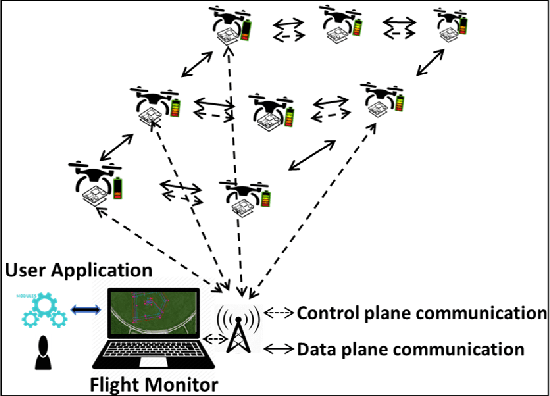
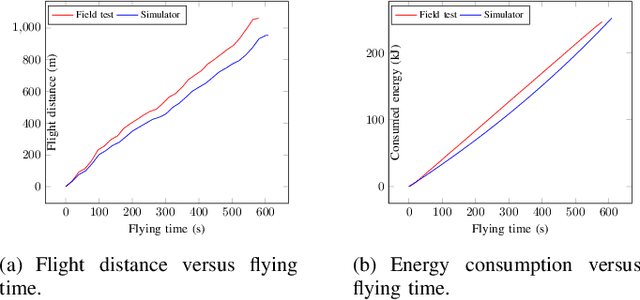
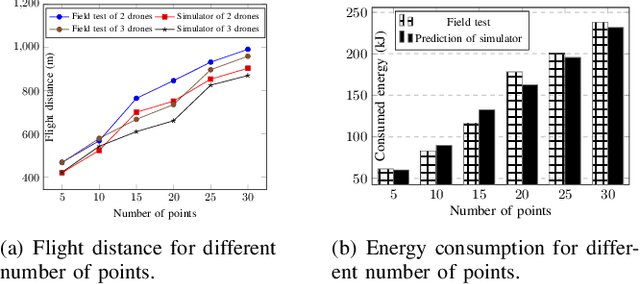
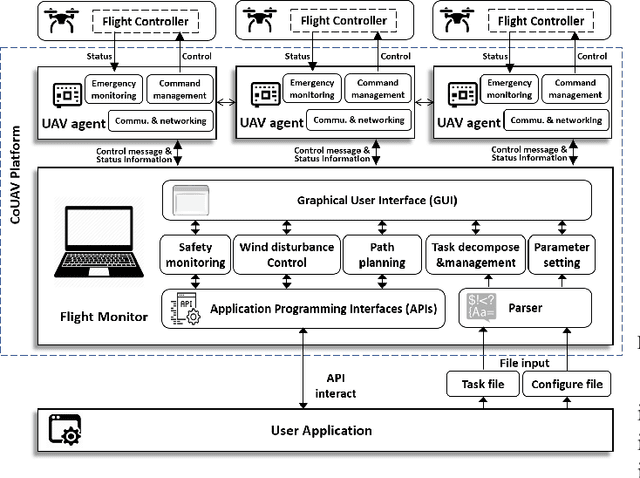
Abstract:In the past decade, unmanned aerial vehicles (UAVs) have been widely used in various civilian applications, most of which only require a single UAV. In the near future, it is expected that more and more applications will be enabled by the cooperation of multiple UAVs. To facilitate such applications, it is desirable to utilize a general control platform for cooperative UAVs. However, existing open-source control platforms cannot fulfill such a demand because (1) they only support the leader-follower mode, which limits the design options for fleet control, (2) existing platforms can support only certain UAVs and thus lack of compatibility, and (3) these platforms cannot accurately simulate a flight mission, which may cause a big gap between simulation and real flight. To address these issues, we propose a general control and monitoring platform for cooperative UAV fleet, namely, CoUAV, which provides a set of core cooperation services of UAVs, including synchronization, connectivity management, path planning, energy simulation, etc. To verify the applicability of CoUAV, we design and develop a prototype and we use the new system to perform an emergency search application that aims to complete a task with the minimum flying time. To achieve this goal, we design and implement a path planning service that takes both the UAV network connectivity and coverage into consideration so as to maximize the efficiency of a fleet. Experimental results by both simulation and field test demonstrate that the proposed system is viable.
 Add to Chrome
Add to Chrome Add to Firefox
Add to Firefox Add to Edge
Add to Edge